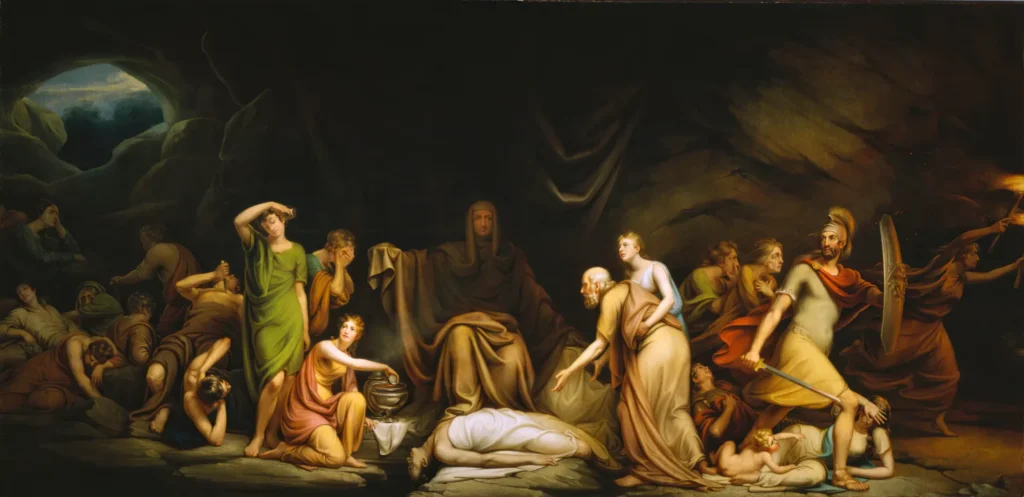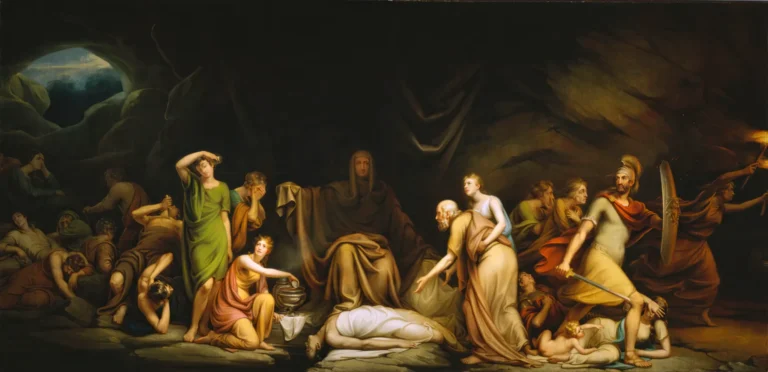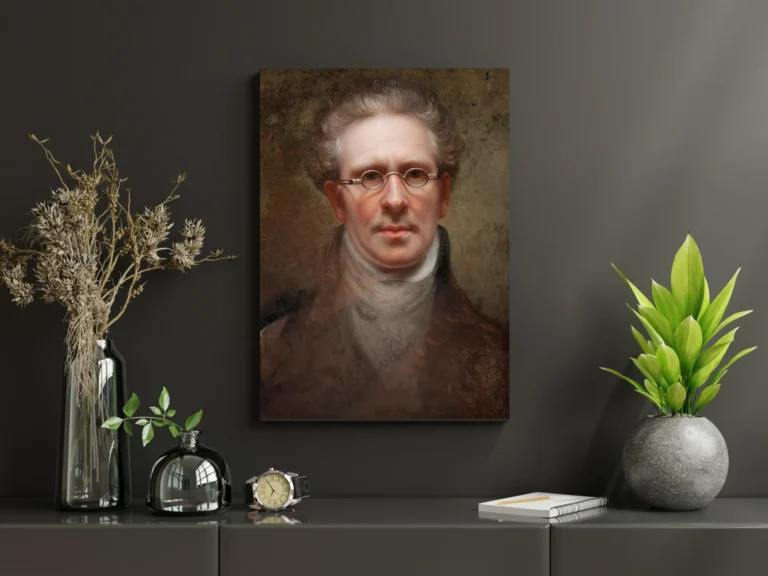The Court of Death I
Rembrandt Peale's 'The Court of Death' is a powerful depiction of mortality, inspired by Bishop Beilby Porteus's poem. Completed in 1820, this life-size painting portrays the personification of Death surrounded by various representations of human failings, such as vices and ailments. It starkly contrasts the chaos of sinful lives with Old Age's gentle acceptance, supported by Faith. This ambitious work embodies Peale's drive to educate and elevate public appreciation for art in a time when such themes were often overlooked in American culture.
Year 1820
About the Artwork
Rembrandt Peale, an American artist and son of the famed portraitist Charles Willson Peale, created 'The Court of Death' as a bold exploration of the themes of death and morality in 1820. Drawing from the text of Bishop Beilby Porteus's poem, Peale sought to visually interpret the poem's moral messages regarding the inevitability of death and the collective human condition. The artwork is a complex tableau filled with personifications of ailments, vices, and even virtues. Each figure contributes to the overarching narrative of mortality, illustrating the triumph of death over human life. In a period where history painting was gaining momentum, Peale's work sought to engage audiences in contemplation of profound themes while also aspiring to elevate the stature of American art. Despite its ambitious nature, the painting struggled to find an audience, serving as a testament to Peale's persistent dedication to his educational goals within the realm of art.
Did You Know
In the artwork, Death is personified as a central figure, symbolizing the inevitable fate that awaits all humanity, serving as a reminder of life’s transience.
Each character around Death serves a specific symbolic role, reflecting various vices and ailments that plague humanity, emphasizing the moral lessons of the painting.
Peale’s work represents a pivotal moment in early American art, as it melds high moral themes with historical context, pushing forward the notion of art as a tool for education and reflection.










